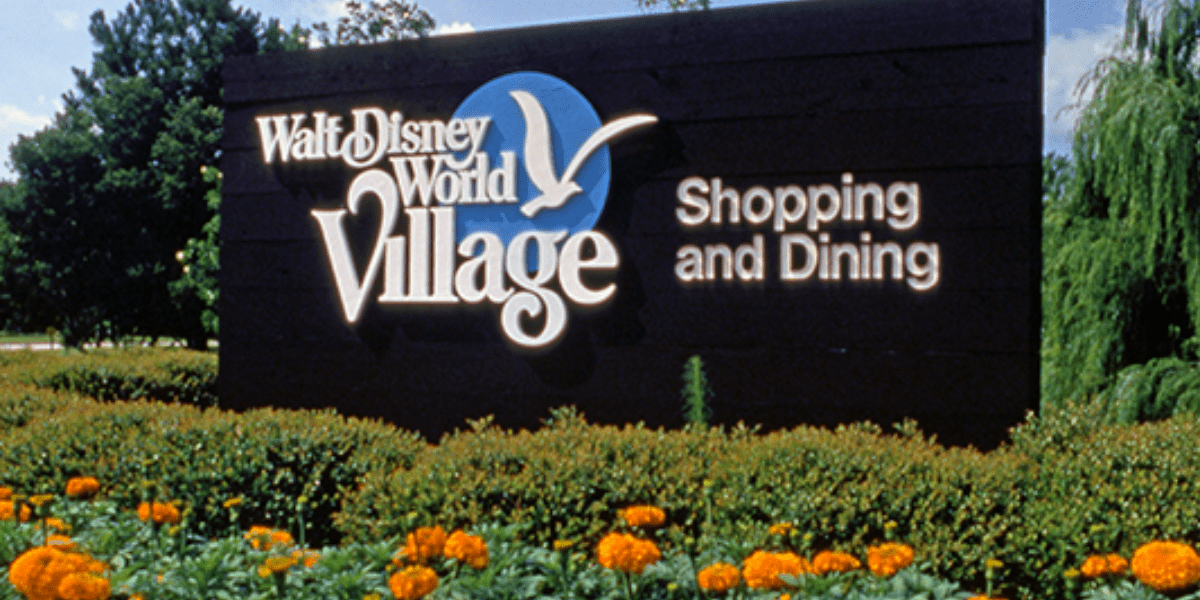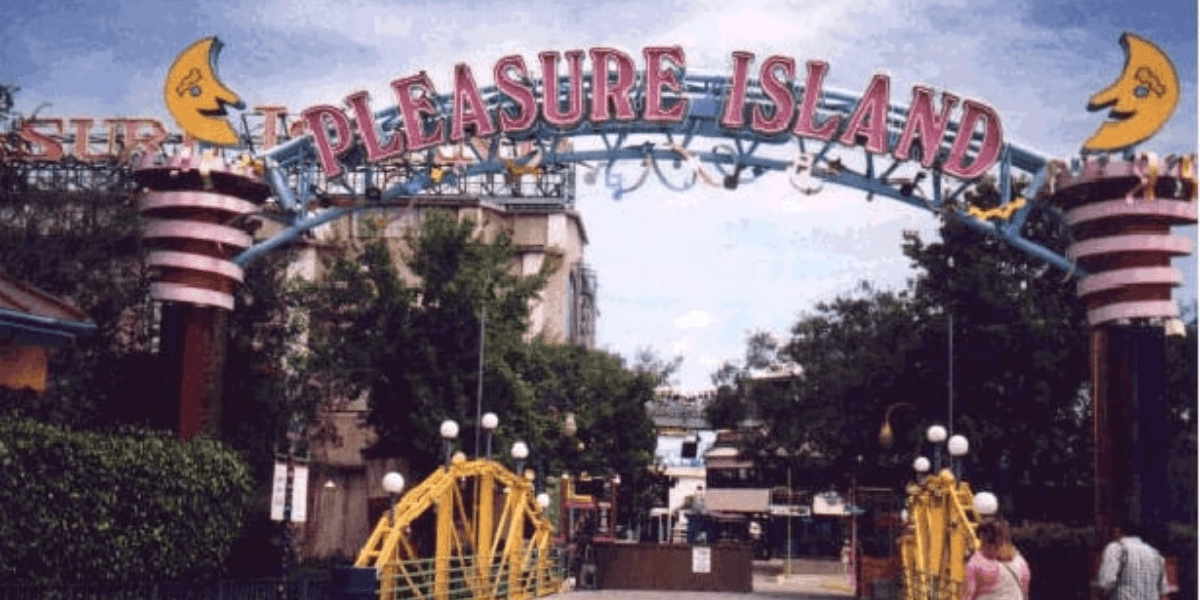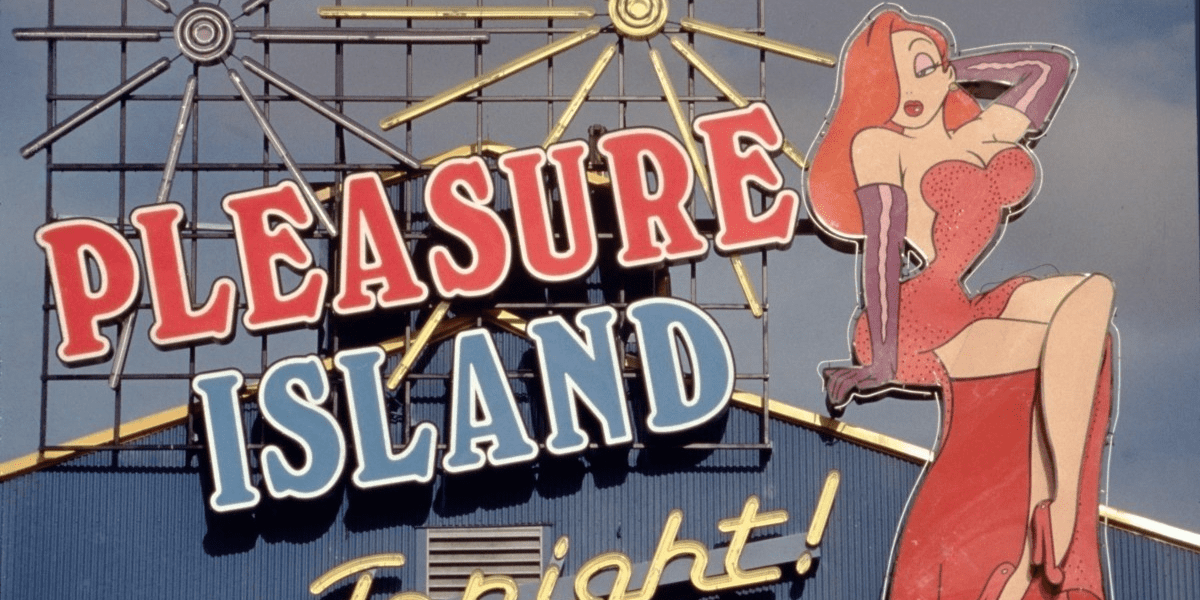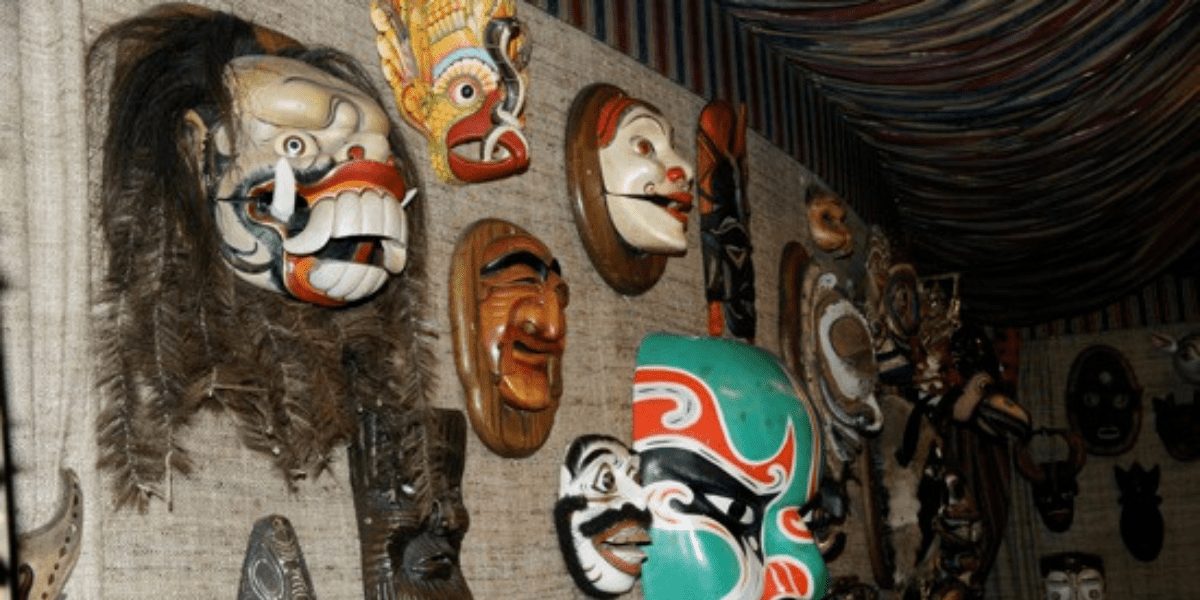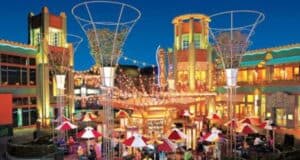
Today we readily accept the bustling nightlife scenes at Walt Disney World Resort as part of the diverse makeup of various experiences to be enjoyed by Guests. But that wasn’t always the case. It wasn’t until the establishment of Pleasure Island that the idea of clubbing and more adult-oriented entertainment on Disney property even took off. Once presented as a ticketed extra experience within an esoteric gated section of Disney’s social hub, Pleasure Island revolutionized the concept of adulting done in Disney style. And it continues to have a cult following even to this day, despite its defunct status for nearly a decade and a half now. In fact, when you explore its former draw along with the eventual reasons for its closure, it does raise questions as to whether or not the former glory of Pleasure Island can ever find new life within the Disney Springs scene of today. Here’s an insightful look back at the history of Pleasure Island and its lasting legacy, which still runs strong to this day.
RELATED: Pleasure Island: The Origins of Disney’s Nightlife
History
When the site we know today as Disney Springs originally opened back in 1975, first as Lake Buena Vista Shopping Center and then renamed Walt Disney World Village two years later, it was initially intended to serve as an area shopping mall. But by 1984, under the management of then-Disney CEO Michael Eisner, Disney was looking into new ways to keep vacationing Guests on the property longer, forgoing their desires to seek out alternative local area detours that provided more adult interests and nightclub pursuits. Their goal was to create an innovative, lively new entertainment hub and clubbing scene right on Disney property that could readily compete with the nearby bustling Church Street Station clubs in Downtown Orlando. So, by July 1986, intentions were announced to construct the addition of Pleasure Island—a name derived from the Walt Disney animated film Pinocchio in 1940. Groundbreaking began on the project a month later and continued for years. At last, on May 1, 1989, Pleasure Island officially opened to the public. The grand opening date was the same as Disney’s Hollywood Studios theme park, which was then known as Disney-MGM Studios. Later that same year, Walt Disney World Village was renamed Disney Village Marketplace.
RELATED: Miss Pleasure Island? For $15,000 You Can Add This Original Funmeister Sign to Your Collection!
Disney’s Elaborate Storyline
It’s already been determined that the name “Pleasure Island” was initially taken from that seedy location the title character visits with a group of unscrupulous pals in the 1940 film Pinocchio. But the Walt Disney Company, always known for crafting clever backstories, further spun an original tale for Pleasure Island’s being. To bring it all together, they created the fictitious character of Merriweather Adam Pleasure. As the legend goes, Merriweather Pleasure was an industrialist and explorer who moved his family to this part of Florida in the 1920s in order to begin a new sail-making/yacht construction business. His venture was a successful one for two decades, and Merriweather Pleasure became renowned for hosting elaborate parties for his employees and friends after hours. But all that changed rapidly by the 1940s when, sadly, Pleasure was lost at sea. His sons were unsuccessful in keeping the business going, and to make matters worse, most of Pleasure Island was eventually destroyed by a storm.
The area sat in disarray and abandonment for many years until the Walt Disney Company eventually rediscovered the ruins. So, they got to work by re-establishing a new venture as a tribute to the lost explorer and businessman—focusing on his long legacy in entertainment and merrymaking.
Shopping and Dining Venues
The popularity of Pleasure Island grew exceedingly throughout its nearly two-decade tenure. And that ploy by the Walt Disney Company to keep Guests more property-based was an undeniable success with all the thriving shops and dining establishments that emerged on the bustling scene. All working to bridge the line between Disney theming and more adult-based interests, on the retail side, folks got to enjoy such venues as Jessica’s (a store featuring the character of Jessica Rabbit from the 1988 film Who Framed Roger Rabbit), Super Studios—a make-your-own-video store (later replaced by Curl by Sammy Duvall), Changing Attitudes (a clothing store and gift shop), DTV (featuring modern Disney fashions), Doodles (which sold Pleasure Island Memorabilia), The Mouse House (vending Disney clothing and plush memorabilia), Hammer and Fire (which presented handcrafted jewelry and fine gifts), Suspended Animation (which sold Disney posters, prints, animated cells, and more), and Music Legends (the place to purchase music, books, memorabilia, and of course music). There was also the Avigators Supply, which sold aviation and adventurer-like gear and memorabilia, including Indiana Jones-themed merchandise.
The delightful dining scene had plenty to boast about as well. First, you had Hill Street Diner selling pizza, hot dogs, and deli-style sandwich goods. There was also the pyrotechnics-themed Fireworks Factory. D-Zertz was a café operation where folks could enjoy coffee, espresso, frozen yogurt, pastries, and more. Merriweather’s Market was a versatile food court, which eventually became the site of Raglan Road Irish Pub & Restaurant in later years. Planet Hollywood opened within this section in 1994, although it was later relocated to the West Side before being replaced by Planet Hollywood Observatory. This is also where that regal riparian wonder, The Empress Lilly has always been permanently docked. It once served as a multifaceted three-in-one restaurant on the water before being transformed into Fulton’s Crab House. Now it is home to the current Paddlefish signature restaurant.
RELATED: The Story Behind ‘The Empress Lilly’ at Disney World
Success as an Entertainment Hub
While shopping and dining certainly had undeniable draws for the public, the entertainment and nightclubbing scenes are what really earned Pleasure Island its most prominent claim to fame. Videopolis East was a happening place, having opened in 1989 and later renamed “Cage” in 1990. Taking its place in 1992 was 8TRAX—a 1970s and 1980s-themed dance club. Neon Armadillo was a country music haven from 1989 to 1998, later replaced by BET Soundstage, which was known for hip-hop and R&B. Celebrate Tonight was an outdoor dance party focused on family entertainment. Comedy Warehouse was the place to catch great improv comedy acts. Mannequins Dance Palace was a multi-story techno-based club with nightly light and mannequin shows.
Then there was Motion—a dance club famous for showcasing Top 40 music videos. Wildhorse Saloon was the place to enjoy barbecue favorites while also getting in on the country/western dance craze of the 1990s. Rock ‘n’ Roll Beach Club was a rock club known for featuring live bands. You could also catch live Jazz stylings at Pleasure Island Jazz Company. XZFR Rockin’ Rollerdrome had a much shorter tenure as a roller skate venture with music. Pleasure Island was also the site of the original AMC Pleasure Island 24 movie theater. There was also the West Stage, which featured live music nightly. But undoubtedly, the 1930s-themed Adventurers Club featuring lively characters and improv actors was among one of Pleasure Island’s most well-known callouts.
Pleasure Island often hosted big-name entertainers. It was also the site of several big-name events and even boasted its own fireworks display every New Year’s Eve between 1990 and 2005.
RELATED: Every Night Used to Be New Year’s Eve on This Extinct Disney ‘Island’
Controversy and Eminent Closure
Pleasure Island, no doubt, served as the first precursor to the Disney Adult concept. While the notion of having adult-centered interests at Disney has since grown in recent years, its existence at a time when Disney was still primarily family and kid-oriented may have, ironically, led to its eventual demise. And by 2008, Disney made the controversial decision to walk back on their original adult-oriented approach in favor of transforming the site into one that was more mutually inclusive for all ages and interests. By September 27 of that same year, Pleasure Island ceased to exist.
In the years leading up to its eventual closure, the hopping Pleasure Island scene that was once so lively during the 1990s was already starting to lose noticeable steam. This was most evident by the time the mid-2000s rolled around. At the time, Pleasure Island even underwent various renovations and changes in hopes of tapering off the undeniable decline in interest and Guest attendance. By August 2004, for instance, the area was no longer considered a gated-off section that required visitors to pay admission. However, individuals still had to pay to enter the different nightclubs. They also did away with both the West End Stage and the Hub Stage in 2006 and constructed a new pedestrian bridge.
The transformations continued over the next two years, including a policy change in January 2007 that required Guests attending Pleasure Island dance clubs to be at least 21 years of age. However, minors and underage adults were still permitted entry into such locations as Comedy Warehouse, Adventurers Club, and the different area restaurants and shops. Still, the downsizing in businesses could not be entirely ignored, and in late June of 2008, Disney announced that all remaining nightclubs operating within the Pleasure Island designation would be closed in September. Taking their place would be newly reimagined family-oriented entertainment offerings.
RELATED: The Beloved Disney World Experiences Ended For ‘Good Reasons’
In the Aftermath
The closure of Pleasure Island did not sit well with many of its most contested fans. And to this day, it still doesn’t sit well with some. There were even rumors at one time of a partial reopening, when Disney announced in February 2009 that three former nightclubs—Motion, Soundstage Club, and Adventurers Club would be available to rent out for private parties until the end of March 2010. Still, onsite construction and developmental changes persisted, with many former buildings being revamped or repurposed into new operations. By this time Paradiso 37, Taste of the Americas had already opened in a former shopping/fast food complex.
In November 2010, Disney even went so far as to mention plans for transforming the former site of Pleasure Island into a district being touted as “Hyperion Wharf”. It would bring about a reimagined early 20th-century seaside warehouse district theme and be the site for all-new entertainment, dining, and shopping—all to be announced later. But the cited concept never came to fruition.
The area was eventually transformed into what is currently known as “The Landing” in April 2015. Later that same year, Downtown Disney officially changed into its current Disney Springs.
Even though the current dining and entertainment establishments comprising The Landing at Disney Springs are different from the proceeding Pleasure Island scene, folks who look closely can still seek out remnants of its former presentation. For instance, Jock Lindsey’s Hangar Bar is a perfect transcending callout to the previous Avigators Supply.
Even beyond the Disney Springs scene directly, the memory of Pleasure Island is still prevalent. You’ll even find signs in newer establishments, like the Jungle Skipper Canteen Restaurant at Magic Kingdom Park, which has on display a fez hat once belonging to Pleasure Island’s founder Merriweather Adam Pleasure. Apparently, he was also a member of the S.E.A. in addition to being part of the Adventurers Club.
RELATED: The Best Themed Places to Dine at Disney Springs
A Lasting Legacy
Pleasure Island will forever have a nostalgic fan following for those who once enjoyed it so well. And now that adult-centered entertainment and clubbing appear to be once again on the rise, as evidenced by the nightlife scene at Disney’s BoardWalk Promenade in addition to the current Disney Springs offerings, it raises the question of whether or not Disney can somehow restore the presence of Pleasure Island in some format. Not only would the timing be perfect, but a restoration of Pleasure Island may even be an economical move for Disney to consider at a time when it is needed most. Of course, it would undeniably be a bold move, but sometimes timing is everything. And for fans who are still lamenting the controversial closure, any time would be an ideal time for Pleasure Island’s return.
Of course, even if Pleasure Island were to be re-established somehow, it would never return to being the same scene or serving an identical purpose to the one it once served. But it would be back with promise and new opportunities that fans of the original would be rightfully ecstatic about. What’s more, newcomers would at last get to experience all the legend for themselves! And it could even go on to be bigger and better—a more pleasurable Pleasure Island!
Disney is certainly capable of finding a way to revisit the former glory of Pleasure Island and garner a rightful reboot. Now, the question remains about whether they would even consider exploring the potential of doing so.

 DisneyTips.com Your Guide To A Great Disney Vacation
DisneyTips.com Your Guide To A Great Disney Vacation
